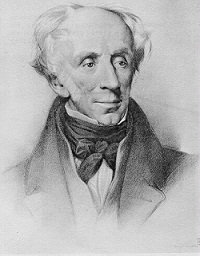What was the poet’s emotion after seeing the Daffodils?
 Answer: First, the author experiences much of nature starting with the sky by imagining himself a cloud. This point of view gives him the opportunity to see how vast the beautiful and happy flowers are. It seems to him that at a glance his eye can capture tens of thousands of them. Also, he considers the daffodils in comparison to the sparkling waves of the ocean. He seems to say that the daffodils are happier than the waves.
Answer: First, the author experiences much of nature starting with the sky by imagining himself a cloud. This point of view gives him the opportunity to see how vast the beautiful and happy flowers are. It seems to him that at a glance his eye can capture tens of thousands of them. Also, he considers the daffodils in comparison to the sparkling waves of the ocean. He seems to say that the daffodils are happier than the waves.
Second, the author uses word choice to express how the daffodils make him feel: pleasure, jocund, glee, and gay.
Third, he gives the daffodils action, the ability to dance. This could also be considered personification. Dancing is an act that occurs out of celebration, not depression.
Finally, the author reflects later upon this image and he can re-create the image in his head, especially when he’s in an empty mood. This image is one he wishes to remember and upon remembering it, his mood is brightened:
For oft, when on my couch I lie
In vacant or in pensive mood,
They flash upon that inward eye
Which is the bliss of solitud;
And then my heart with pleasure fills,
And dances with the daffodils.
The poet is wandering in a state of loneliness and absent-mindedness (as a cloud: is a simile, he compares his lonely to that of a cloud and the cloud symbolizes his integration with the natural world). Both he and the cloud are floating (floats= fluttua) on high, when he saw a field full of golden daffodils (crowd= folla – they are seen as a crowd). Both he and the cloud are aspects of the world, which is subject to the laws of nature but they can still retain their freedom in spite of this.
[adToAppearHere]
Other images in the poem reinforce this – the ‘lake’ ‘trees’ ‘cloud’ and ‘waves’ are all natural images and the daffodils give the clear focus of the poem which predominately makes nature the most important feature throughout.
host, of golden daffodils = moltitudine di giunchiglie dorate; The poem was inspired by the sight of a field full of golden daffodils waving in the wind. These daffodils are located in the countryside near a lake and trees and are also seen to move continually in a dance. Wordsworth expresses feelings for nature through these symbolic objects. He personifies the daffodils as dancers (dancing in the breeze = danzanti nella brezza), dancing gaily as part of the beauty of nature.
In the second lines the poet shows the daffodils as part of a universal order and he compares them to the stars (as the stars) in the Milky Way (= Via Lattea).
They stretched in never-ending line = The daffodils (they) are ( stretched = si estendono) in never-ending line (fila infinita) The sight of the daffodils amazes the poet at first because of their great number in fact they a crowd, continuous, ten thousand (saw I at a glance = viste con un’occhiata), host, never ending-line. The poet wants to underline that the flower are really many.
The daffodils were tossing (=scuotevano) their heads in a sprightly (=allegra/briosa) dance.
The daffodils are then compared with the waves on the lake, which also dance(The waves beside them danced), though not with so much glee (= gaiezza/gioia; is a peculiar word which the poet uses when talking of the joy of creative activity) as the flowers ( Out-did the sparkling waves = superavano le onde spumeggianti).
The poet is gay because the joy of nature affects the poet. The rhythm falls with a special emphasis on the “gazing” (I gazed—and gazed = guardavo/fissavo).
The experience of the poet is not limited to the immediate pleasure of intellectual delight in the scene observed. He realises the full extent of the wealth the scene has given him in a spiritual way and it stays with him always as an inspiration (What wealth the show to me had brought).
The last stanza of the poem reveals that he is lying on a couch and visualizing the daffodils, which brings him serenity and joy: For oft = spesso; when on my couch I lie = quando mi trovo sul mio divano; In vacant = ozioso/distratto or in pensive= pensoso mood = stato d’animo. In this stanza there is a tense shift from past to present. In the first three stanzas the tense is the past and in the last stanza there is the present.
They = the daffodils, once again, flash upon that inward (=interiore) eye/Which is the bliss (beatitudine ) of solitude: this kind of solitude is very different from the melancholy loneliness described at the beginning of the poem. In this condition the poet finds his heart dancing with joy, a joy which revives the pleasure participated in when he observed the dance of the daffodils in the breeze.




